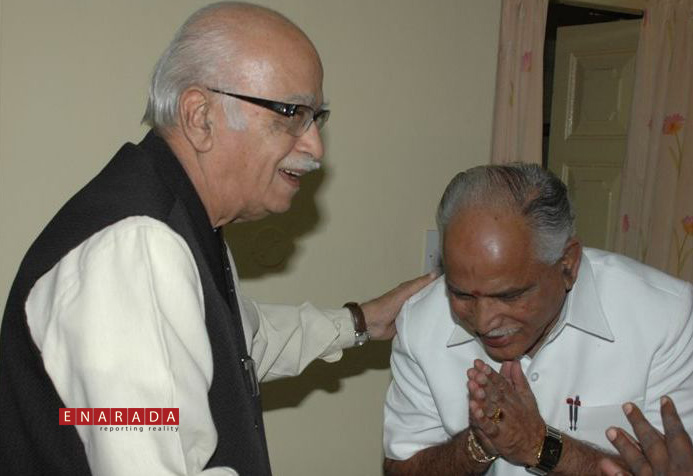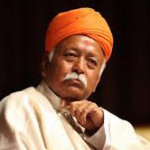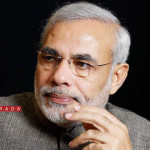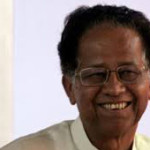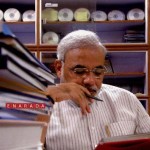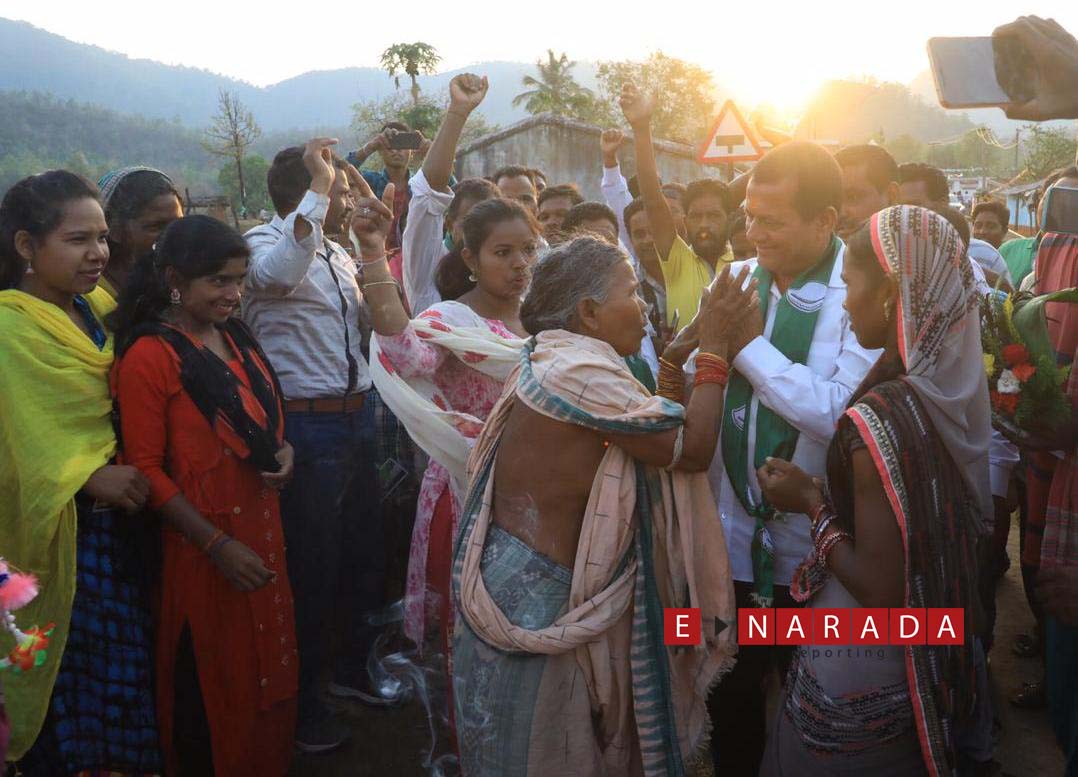ENARADA, New Delhi
By AJAY N JHA
Has infighting among BJP leaders already started taking toll on the overall image of BJP? That is what the latest IB report says. According to this report, “the BJP’s tally has come down from 220 to 180 seats and Modi’s opponents can actually bring it down to 160 seats.” While questions can be raised on the methodology through which the intelligence agencies could get down to the exact number, the fact remains that the developments in the BJP camp during the last 9 days have definitely created some doubts in voter’s mind.
The sulk saga began yet again with the eternal charioteer LK Advani who is now seen by many within the party as a spent force. He had made his disapproval of BJP’s prime ministerial candidate Narendra Modi quite public. Although the party somehow managed to cool down the flaring tempers for a while, another storm was in the brewing. His belligerence came to the more yet again with the report that Advani was keen to fight the Lok Sabha elections from Bhopal rather than Gandhinagar, considering his proximity to Madhya Pradesh Chief Minister Shivraj Singh Chouhan.
It is no secret that Advani does not share a comfortable equation with the Gujarat chief minister. Apparently, Advani feared that his electoral prospects may be damaged due to possible ‘internal sabotage’. However, despite his apprehension, the party made Advani its Gandhinagar candidate. But his name figured in the Fifth list and that was a clear low down. Moreover, the decision that he would fight the polls from Gandhinagar was made known to him through the press. That is what left him more besmirched. At the end, Advani proved to be smarter than Modi and became more around a mill around his neck because Modi would have to ensure his victory from Gandhinagar at any cost.
Ideally Modi should have invited him to contest the polls from his state. “It is surprising that when people like Arun Jaitley, Sushma Swaraj, Rajnath Singh and Modi himself are allowed to choose their seats, why was Advani not allowed to do that? If maximization of seats was BJP’s criteria then Advani should have been allowed to choose his seat,” said a senior BJP leader.
Obviously, this did not go well with those who felt that Advani should not have been treated in such a shabby way. They felt that Advani was not given an opportunity to speak his mind. He constructed the party but BJP had thrown Advani out of the house. When the BJP was dislodging winning candidates like Navjot Singh Sidhu from Amritsar so that Arun Jaitley can be protected why was Advani not given the same right as the other parliamentary board members?
Then came the Jaswant Singh issue which made the position of BJP President Rajnath Singh more untenable. Jaswant Singh directly attacked Rajanath Singh for not getting the party nomination from Barmer and went to the extent of filing nomination as an independent candidate. That too made a section of BJP leadership uncomfortable who felt that the BJP top brass was creating divisions within the party with this forceful changing of seats.
Some BJP leaders are also saying that in quest of getting 50 seats in Uttar Pradesh, the party was creating squabbles in the lower ranks. They pulled out Murli Manohar Joshi from Varanasi against his wishes and Lalji Tandon from Lucknow again against his wishes. BJP president Rajnath Singh shifted himself out of Ghaziabad because he feared the rise of Aam Aadmi Party there. “Lucknow is traditionally considered as a safe seat for the BJP. Modi wanted to contest from Lucknow but Singh kept it for himself. These decisions will negatively impact the party in the long run,” said a BJP functionary.
According to them, pushing all seniors into a corner was a move which could as well boomerang. It seems Narendra Modi’s dream of a Congress-mukt Bharat has been replaced with the idea of a BJP-mukt Bharat. Modi’s appears to be in a hurry to distance itself from the BJP built around the triumvirate of the 1990s, or whatever still remains of it. The act of jettisoning the past is not limited to personalities like Advani, Joshi and Jaswant Singh; Modi’s political party is dumping also the last strands of ideology that defined the BJP.
The party per se remains the same but the plot and the characters have changed completely. The turning for BJP was 1984 when the BJP was reduced to just 2 seats. In 1989, when the BJP went up from 2 to 88, two factors were primarily responsible for its growth. The anti-corruption movement spearheaded by VP Singh was the common denominator for all opposition parties. Since the BJP was part of the grand alliance against the Congress, it also benefitted from the national sentiment. But the differentiator for the BJP was its Kamandal movement that ended in the destruction of the disputed shrine at Ayodhya. Advani was the brain behind this movement. His Rath was the BJP’s chariot to power.
Ayodhya temple, the defining a symbol of ‘rashtravad’, as Advani and Joshi would argue in the heady days of the movement, isn’t part of the BJP’s agenda any more.
Secondly, the BJP prided itself in being called a party with a difference. Its leaders raised their pitch sky high claiming the BJP’s politics was a pristine white contrast to the black shades of the Congress. But today’s BJP is not even a shadow of its original avatar. It has inherited most of the vices of the Congress and surrendered most of its own traits.
Jaswant’s ostracism is a shining example of the BJP’s ideological pollution. Here is a man who was the face of Vajpayee’s foreign policy and economics, a man who was the diplomatic face of the Vajpayee era, a man who gave decades of his life to the BJP. The new BJP team under Rajnath and Modi first made him almost beg for a ticket and then, after turning him into an object of pity, left him out in the deserts of Barmer to accommodate a dedicated 10 Janpath darbari Col Sonaram.
The fact remains that today, anybody who is opposed to Modi is seen as an enemy of the Rashtra of tomorrow. Murli Manohar Joshi’s plight, Jaswant’s humiliation and Advani’s journey from the hero of the BJP cadres, the ring master of the saffron parivar’s kar sevaks, to the No 1 villain for Modi’s party are just the logical culmination of their own and the BJP’s karmic cycle.
Added to BJP’s discomfiture in the midst of a muddle is Arvind kejriwal’s decision to challenge Modi at Varanasi. AAP leader Arvind Kejriwal is a master strategist. He knows how to keep himself in the media limelight. The AAP fielding its star candidate against Modi would mean that the party can no longer be ignored by it. Modi has never mentioned the AAP directly or gone after Kejriwal like he has with other political rivals. Unfortunately, he now won’t have the option of being able to ignore him, having to face off against the party in Varanasi, a seat that he is contesting more as a symbolic gesture.
But for kejriwal, it would be the second attempt after his Delhi demolition act. Even if it doesn’t work, it may be their best chance at attempting to humiliate Modi electorally. He has tried to arrange the support of Muslim voters of Varanasi who are around 28 percent. Yet that would not be enough.
There are many reasons why we should not read too much into this piece of overhyped gesture. A quick look at Kejriwal’s poll strategy confirms he has no great affection for Modi brewing in his otherwise conflicted being. There were several states he could have made a splash in to herald his arrival in national politics: Haryana with its Vadra legacy, history of corruption and gender violence. It’s also familiar territory. Uttar Pradesh – torn apart by corruption and communal disharmony. Bihar, where reportedly his party is making quiet inroads, and a state fraught with economy paralysis and poverty.
In Gujarat, a state that is far more hostile territory except for the presence of Narendra Modi, a target that offers the prospect of plenty of media attention, and a chequered and polarizing history that is ripe for attack. But kejriwal’s loud speak and his theatrics would only add colour to the ongoing poll festival.
Since the 2014 elections will be won or lost in Uttar Pradesh, it is fairly clear that all parties will concentrate their critical efforts here. For the BJP, the effort is to maximise its expected gains in this heartland state with 80 seats; for Mayawati’s Bahujan Samaj Party (BSP) the aim will be to hold on to what she has; for Mulayam Singh’s Samajwadi Party (SP), the goal will be to minimise losses; for the Congress it will be to prevent a rout and see if Modi can be tripped or forced to expend himself more in UP so that his party does not benefit from his campaigning elsewhere.
The BJP clearly lost some momentum last week by delaying seat announcements, which enabled the likes of LK Advani and Jaswant Singh to waste more party time. A look at the candidate selections of the four major contenders shows what their hopes and fears are in 2014. From their caste and community configurations we can make deductions about what the parties themselves think are their strengths and weaknesses. Despite the fact that this election looks less caste-oriented, the main thing one notices in the serious efforts put in by all the four parties to get the caste arithmetic right.
For example, the BSP which fears an erosion in its Brahmin vote due to the rising fortunes of the BJP. It has fielded 21 Brahmins – the highest among all parties so far – and 19 Muslims, which suggests that Mayawati hopes to make some gains among the minorities in view of their antipathy to the BJP’s mascot. Dalits get 17, OBCs 15 and Thakurs eight, which means Mayawati is reasonably confident of her Dalit base. It is unlikely she will be expecting too many votes from Thakurs and OBCs.
In contrast, the SP has fielded the maximum number of OBCs – possibly Yadavs – since this is its core vote, and vulnerable to Modi’s pitch. Modi comes from the most backward caste segment, and Kalyan Singh is a major factor among the non-Yadav OBCs. The SP has given Muslims 13, the upper castes 18 (Brahmins plus Thakurs), and Dalits 17. This distribution of candidates indicates that SP expects Muslims and OBCs to vote for it, but is not setting great store by the upper castes.
The Congress, which has announced just 65 candidates till now, also appears to be writing off a good chunk of its upper caste vote by giving Brahmins nine and Thakurs eight. Dalits get 14 and OBCs another 14, with Muslims getting 11. This even distribution among castes and communities so far suggests that the party is not expecting any gains in any particular group. It is a cut-your-losses, defensive strategy.
However, BJP candidate selection is most skewed – and thus aggressive. It has zero Muslims, which means it is expecting strong, tactical voting by the minority community against it. Instead, it is concentrating its efforts among the upper castes and OBCs, with Brahmins getting 15, Thakurs 12 and OBCs 26. Dalits get 15 of the 70 seats announced so far.
The BJP is banking heavily on a combination of upper caste consolidation and non-Yadav OBCs – precisely the combo that evolved in the 1990s to bring the BJP to power in Uttar Pradesh. Narendra Modi’s hand-picked Man Friday, Amit Shah, facilitated these selections based on his own first-hand assessments at the constituency level. While the media has been talking about dissent in the BJP based on Murli Manohar Joshi’s stated disgruntlement over being denied Varanasi and Lalji Tandon’s unwillingness to shift to Deoria from Kanpur, which was vacated for Joshi, it appears that the party has made choices based on winnability and not past reputation as the party expects the Modi wave to make these candidate selections work.
Apart from Gujarat and Uttar Pradesh, the BJP is also looking forward to meaningful gains in other parts of the country as well. The BJP could manage to wean away Satpal Maharaj, a four time MP and a spiritual leader who reportedly commands support of six MLAs, joining the ranks of the BJP signals destabilisation of the Congress government in Uttarakhand, which survives on a wafer thin majority with help of four independents.
In Tamil Nadu, the BJP was able to stitch up a surprise umbrella coalition with five regional parties, Vijayakanth’s DMDK, S Ramadoss’s PMK, Vaiko’s MDMK, IJK and KMDK. The last two could fight on the BJP’s symbol. Though the BJP conventionally did not have more than two percent votes in the past, the fact that it could build and lead a front in Tamil Nadu speaks volumes on the kind of popular sentiments Modi has generated for himself.
Tamil Nadu’s politics has traditionally been bipolar with smaller parties joining either of the two fronts (led by either DMK or AIADMK). BJP leaders have been going gaga over the developments and that has been making Congress leaders feel even more dejected.
This signifies three things — Modi despite a clear language barrier has been able to leave an impression among people. He was no political untouchable. Instead, he was on track, expanding the NDA.
Second, the BJP was able to do what even the Congress couldn’t do, albeit notionally, lead the front. It could make DMDK and PMK come together, the two parties which have, otherwise, been constantly been quarreling. The BJP is adding on percentage of vote little by little and building a possible winnable kitty. This alternate alliance in Tamil Nadu expects to gain 15-16 percent votes and around 10 seats. The numbers are rather optimistic, but that expectation, real or fictitious, is keeping BJP workers on the boil.
Third, if it is able to win some seats it could approach either the DMK or the AIADMK for support, post-poll on certain degree of strength. Modi shares an excellent personal rapport with Jayalalithaa, Karunanidhi has already made positive overtures and his son Alagiri is using every opportunity to praise BJP’s prime ministerial candidate.
The party is also hoping to eat into Congress’ social support base, which broadly constitutes of those who wish to be more in alignment with nationalist thinking, besides identification on caste and broader Dravidian sentiments.
Many political observers believe that the BJP’s decision in 2004 to dump the DMK and join hands with the AIADMK changed the game in Congress’s favour. In 2014 the party is taking a completely different position, floating a front on its own.
An analysis suggests that in 2009 elections, the DMK front won a majority of seats but the winning margin in 21 seats was less than 50,000 and only nine of the winners won by over a lakh votes. The DMDK played the spoiler, bagging 10 percent of votes. The DMDK couldn’t win seats then but in the assembly elections, its numbers went past the DMK.
This gives a psychological high to Modi’s campaign. Not only because BJP was finding allies down south, but because even in worst times, it was South India which saved the Congress from falling from grace beyond a certain point and made it come to power in the last two elections. The emerging trends particularly in Tamil Nadu and Andhra Pradesh are all out to make a conclusion.
However, the biggest question that even BJP insider are not prepared to answer is the actual loss of seat to BJP because of these internal squabbling which may come in the way of reaching the target of 272 plus. They admit that poll arithmetic can change overnight in such a politically surcharged environment. Whether Modi would be able to assuage the ruffled feelings of these Chieftains and whether he would be able to steer clear of these quagmires and emerge as a clear winner all the way to 7 race course is what no one wants to take a bet on.
(Posted on March 26, 2014 @ 4pm)
(Ajay N Jha is a veteran journalist from both Print and Electronic media. He is Advisor to Prasar Bharti. The views expressed are his personal. His email id is Ajay N Jha <ajayjha30@gmail.com> )
The views expressed on the website are those of the Columnists/ Authors/Journalists / Correspondents and do not necessarily reflect the views of ENARADA.

